



W Polsce jest ich ponad sto trzydzieści. Status „pomnika historii” jest przyznawany zabytkom o szczególnej wartości historycznej, naukowej i artystycznej oraz o wyjątkowym znaczeniu dla dziedzictwa kulturowego Polski. Poznajcie obiekty na Warmii i Mazurach, które zostały uznane za pomniki historii.
Frombork – zespół katedralny
Warowne wzgórze katedralne we Fromborku nad Zalewem Wiślanym jest jedynym tak dobrze zachowanym tego typu zabytkiem na świecie. Status pomnika historii uzyskał on jako pierwszy w regionie – już w 1994 r. Na wybudowany w XIV w. kompleks składają się m.in. gotycka archikatedra, pałac biskupi, wikariat, mury obronne z basztami oraz dzwonnica zwana Wieżą Radziejowskiego. Oprócz gotyckiej architektury magnesem przyciągającym turystów jest działające Muzeum Mikołaja Kopernika, prezentujące m.in. pamiątki po urzędującym ok. 500 lat temu wybitnym astronomie. To właśnie we Fromborku prowadził on obserwacje nieba i ukończył pisanie traktatu „O obrotach sfer niebieskich”, w którym dowodził prawdziwości teorii heliocentrycznej. Więcej informacji tutaj i tutaj.
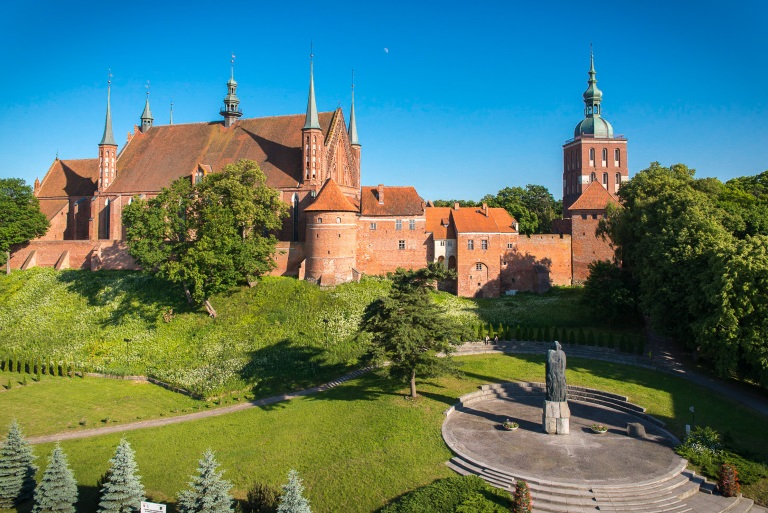
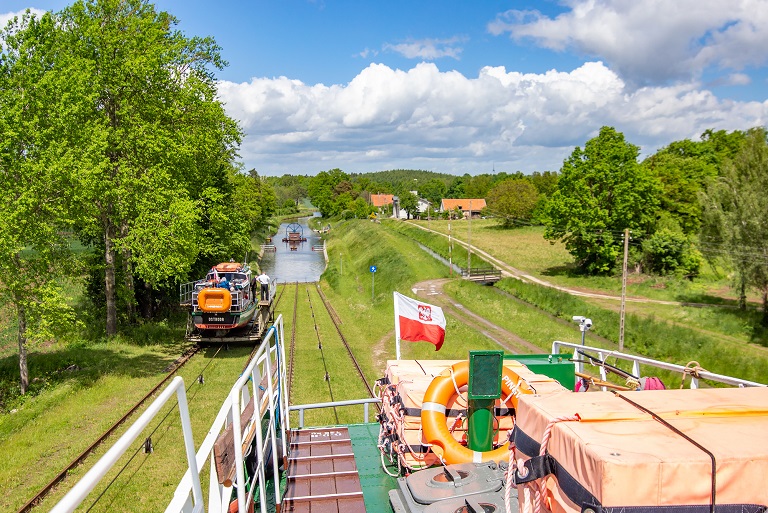
Kanał Elbląski
W dalszą podróż udamy się… kolejnym pomnikiem historii. Wybudowany w XIX w., obecnie najdłuższy kanał żeglowny w Polsce, słynie z unikatowych w skali świata rozwiązań technicznych. Droga wodna połączyła Elbląg z Ostródą (długość 84 km, z odgałęzieniami ok. 152 km). Aby pokonać sięgającą 100 m różnicę poziomów na odcinku 10 km, wybudowano pięć pochylni o suchych grzbietach. Jednostki pływające są po nich przeciągane na wózkach, którym napęd daje siła spadku wody. Obserwując statki na pochylniach, odnosimy wrażenie, że płyną one po trawie. W sezonie turystycznym możemy skorzystać z takiego rejsu wycieczkowego. Więcej informacji tutaj.
Fot. Polskie-Szlaki
Grunwald – Pole Bitwy
Pola Grunwaldu zasłynęły w historii Polski jako miejsce jednej z największych bitew średniowiecznej Europy. Starły się w niej siły polsko-litewsko-ruskie pod wodzą króla Władysława Jagiełły z wojskami Zakonu Krzyżackiego wspomaganymi przez rycerstwo z różnych zakątków Europy. Zwycięstwo armii Jagiełły stało się początkiem końca państwa krzyżackiego. Dziś na pamiątkę bitwy co roku w lipcu jest organizowana jej wielka inscenizacja, gromadząca dziesiątki tysięcy widzów. Poza tym na Polach Grunwaldu przez cały rok działa nowoczesne Muzeum Bitwy pod Grunwaldem, gdzie możemy zwiedzić wystawy dotyczące starcia i jego kontekstu historycznego. Więcej informacji tutaj.
Fot. Polskie-Szlaki
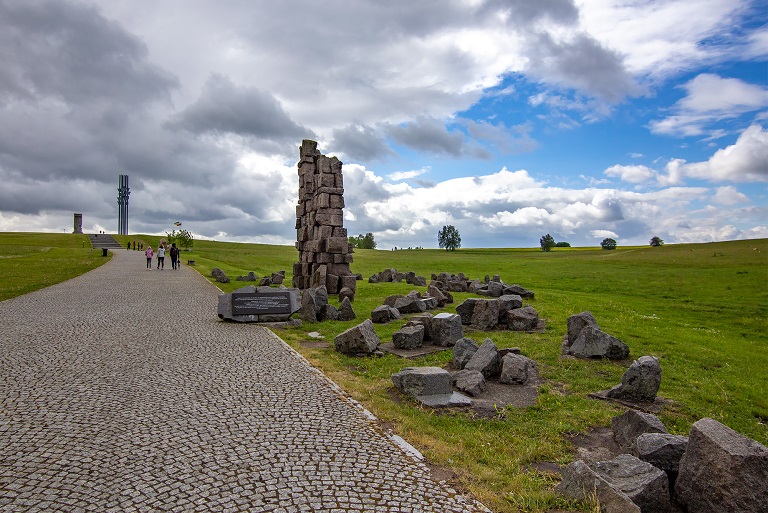
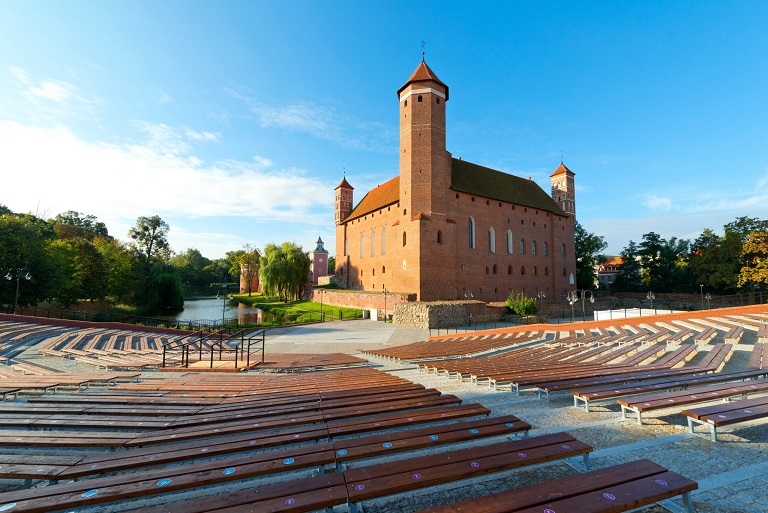
Lidzbark Warmiński – zamek biskupów warmińskich
Kromer, Dantyszek, Krasicki – co łączy tę trójkę? Po pierwsze: byli wybitnymi literatami, a ich dzieła przeszły do historii polskiego piśmiennictwa. Po drugie: każdy z nich był biskupem warmińskim i mieszkał w lidzbarskim zamku. Gotycka warownia powstała w połowie XIV w. i do 1795 r. stanowiła główną rezydencję biskupią. Co ciekawe, także tutaj urzędował Mikołaj Kopernik, gdy pełnił funkcję sekretarza i lekarza biskupa Łukasza Watzenrodego, prywatnie będącego jego wujem. Czteroskrzydłowa budowla zachowała się w doskonałym stanie. Jej dziedziniec otaczają efektowne krużganki, co przyniosło jej miano Wawelu Północy. Spośród zamkowych wnętrz największe wrażenie robią Wielki Refektarz i kaplica św. Anny z rokokowym wyposażeniem. Obecnie w zamku działa Muzeum Warmińskie, a w budynkach przedzamcza na gości czeka stylowy hotel. Więcej informacji tutaj.
Sanktuarium Matki Pokoju w Stoczku Klasztornym
Niedaleko Lidzbarka Warmińskiego możemy odwiedzić perłę sztuki sakralnej, będącą najmłodszym pomnikiem historii w regionie (od 2022 r.). Barokowy kościół Nawiedzenia Najświętszej Maryi Panny powstał w XVII w., a potem został otoczony krużgankami z kaplicami narożnymi. Na ołtarzu głównym kościoła wisi obraz Matki Boskiej Stoczkowskiej, czyli kopia rzymskiego obrazu „Salus Populi Romani”. Do kompleksu sanktuarium należy także dawny klasztor, w którym w latach 1953-1954 władze komunistyczne więziły kardynała Stefana Wyszyńskiego. Dziś można tu obejrzeć ekspozycję poświęconą Prymasowi Tysiąclecia. Więcej informacji tutaj.


Święta Lipka – sanktuarium pielgrzymkowe
Sanktuarium maryjne w Świętej Lipce już od średniowiecza przyciągało niezliczone rzesze pielgrzymów z całej Europy. Według przekazów początki sanktuarium sięgają XIV w. W krótkim czasie zasłynęło ono cudami i uzdrowieniami. Sercem sanktuarium jest barokowy kościół Nawiedzenia Najświętszej Maryi Panny z końca XVII w. Z czasem do świątyni dobudowano czworoboczny krużganek z kaplicami narożnymi. Kościół słynie z organów z figurami, które poruszają się podczas gry. Cykl letnich koncertów organowych przyciąga licznych miłośników muzyki. Ozdobą ołtarza głównego jest obraz Matki Bożej Świętolipskiej z 1640 r., będący kopią obrazu Matki Bożej Śnieżnej z rzymskiego kościoła Santa Maria Maggiore. Więcej informacji tutaj.
Fot. Bartek w Podróży
Poza pomnikami historii na Warmii i Mazurach odkryjecie mnóstwo innych zabytków. Są wśród nich gotyckie warownie i kościoły, fortyfikacje z XIX i XX w., urokliwe miejskie kamieniczki i zabudowa wiejska w skansenach. Warto ruszyć ich szlakiem, by odkrywać kolejne karty historii regionu.
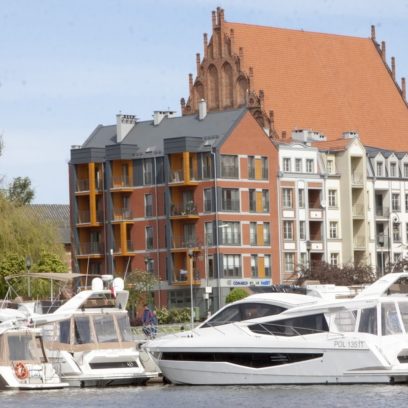
Elbląg to doskonałe miejsce do spędzenia ciekawego weekendu. Najstarsze miasto w województwie warmińsko-mazurskim ma do zaoferowania nie tylko mnóstwo pamiątek historii, ale i wiele atrakcji jak najbardziej współczesnych.
Dowiedz się więcej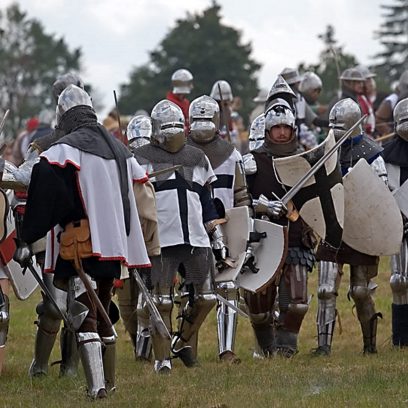
Inscenizacja bitwy skupia uwagę miłośników historii i gromadzi dziesiątki tysięcy widzów. Bitwa pod Grunwaldem została upamiętniona zarówno w literaturze, jak i w malarstwie, a także w filmie.
Dowiedz się więcej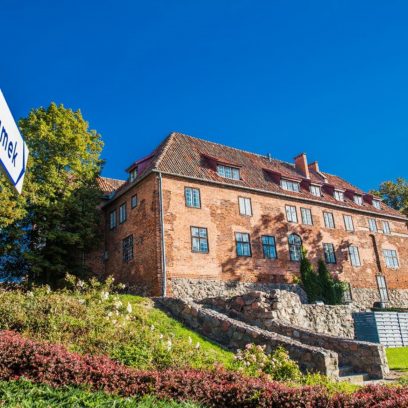
Warmia i Mazury to region Polski o niezwykłym dziedzictwie kulturowym. O jego burzliwych dziejach i skomplikowanych losach jego mieszkańców przypomina wiele ciekawych zabytków. Podróżując po regionie, możemy obejrzeć okazałe zamki, kościoły, fortyfikacje miejskie czy kamienice, będące świadkami minionych wieków.
Dowiedz się więcej